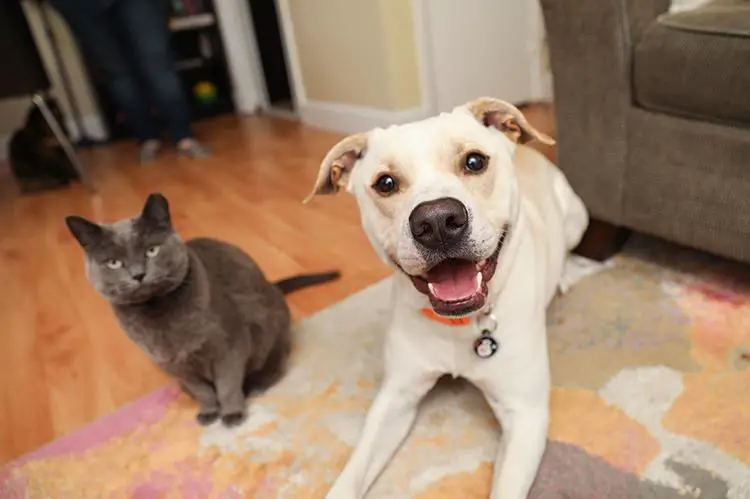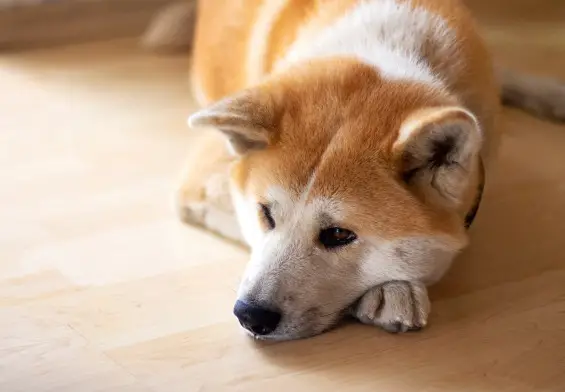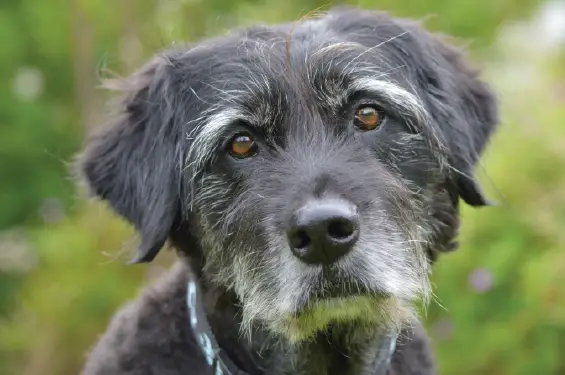Can Cats Catch Parvo From Dogs? Is it Contagious?
Parvo is every dog owner’s worst nightmare. One moment your dog is jumping around; days later, it is barely moving a limb. Parvo or Canine parvovirus, as it is sometimes called, can be very devastating to your dog’s health. The disease can affect any breed of dog and can be fatal in a matter of days if left untreated. It is very contagious and has an alarming fatality rate of around 91 percent. If you have a lot of dogs and one of your dogs gets Parvo, there’s a very strong chance that all your dogs will get the disease as well. But what if you have a cat at home? Can cats get Parvo from dogs?
Yes, cats can get Parvo from dogs! This highly contagious disease can indeed be spread from dogs to cats. However, there’s a lot of details under the hood that you need to know about. Let’s start with a little bit of background on cats and Canine Parvovirus.
Cats and Canine Parvovirus
Dogs and cats have their unique strains of Parvovirus. While the strain of Parvovirus that affects cats is called feline panleukopenia virus (FPLV), the one that affects dogs is called Canine Parvovirus (CPV). While FPLV cannot be transferred to dogs, the same cannot be said of the Canine Parvovirus.
Previously, pet owners believed that cats could not contract Canine parvovirus from dogs. While there wasn’t much scientific evidence to back this narrative, it was nonetheless the prevailing belief. What reinforced the assumption was that there were barely any publicized instances of cats falling victims to Canine parvovirus. Cats who lived in the same home as dogs who contracted Parvo rarely exhibited any symptoms of the disease. However, due to prudent scientific research, there is evidence indicating that cats can contract Parvo from dogs.
How Can Your Cat Contract Canine Parvovirus?
The primary mode of transmission of Canine Parvovirus is through direct contact and exposure to contaminated feces. This means, if your cat encounters a dog that has the virus, they’ll likely get it. If your cat sniffs or gets exposed to feces that has been contaminated with Canine Parvovirus, they’ll also get it as well. Unfortunately, feces and direct contact with an infected dog isn’t the only way your cat can contract the virus.
While there’s still much left to be figured on the scientific angle, it is highly likely that cats can also contract Parvo through indirect contact. Canine Parvovirus can survive on surfaces, clothing, equipment, even on the human skin for an extended period. This means your cat can contract the disease when they encounter these items. As a pet lover who owns a dog and a cat, you can be a vector of the disease. This could happen if you contact the virus (maybe on your skin) and then your cat comes in contact with you.
The Canine Parvovirus is known to be an incredibly resilient virus. At room temperature, it can survive on surfaces for at least 60 days. Worst off, it is resistant to the most commonly used disinfectants. This means even if you aren’t using a recommended disinfectant with just enough power to kill it, attempts at disinfection might be futile. While the virus survives for a few months at room temperature, it can survive for even much longer when outdoors. If the virus stays on an outdoor surface that is not exposed to direct sunlight, it could survive for up to several years.
This is why the risk of exposure is very high as long as you have a dog that has the virus. To be proactive and protect your pets, once you suspect your dog has the virus, act immediately. Call your veterinarian and ensure the infected dog is quarantined as soon as possible. But how do you know when your dog has infected with the Canine Parvovirus? Let’s find out.
Symptoms of Canine Parvovirus
Once your dog contracts the Parvovirus, the virus immediately starts to replicate in its body. The replication usually happens in the lymphopoietic tissue, the bone marrow and the small intestine. This is why the dog starts experiencing gastrointestinal problems, and in rare cases, heart inflammation (myocarditis). Once a puppy or a dog contracts the virus, it usually takes about three to seven days before symptoms of the disease start manifesting. What are the symptoms to look out for?
- Lethargy
- Fever
- Bloody diarrhea
- Anorexia
- Vomiting
- Weakness
- Weight loss
- Dehydration
- Depression
Once you notice your dog exhibiting any combination of the symptoms above, contact a veterinarian as soon as possible. Of course, the symptoms listed above could also manifest due to other health problems. However, whether or not you suspect that your dog has Parvo, you should contact a veterinarian nonetheless. The earlier you isolate a dog that has Parvo, the less likely it will contaminate surfaces it touches.
The symptoms listed above are those exhibited by infected dogs. In cats, canine Parvovirus symptoms are much milder and are usually akin to the signs of the feline strain of the Parvovirus (FPV). While bloody diarrhea in dogs infected with Parvo can be severe, things may be much easier for cats. The symptoms of the Feline strain of the Parvovirus are;
- Vomiting frequently and being wet on the lips
- Spikes and falls in temperature
- Thirst and hunger but an inability to drink or eat
- Infected cats frequently position themselves hunched over food bowls.
- Watery diarrhea (could be with or without blood)
How Can You Protect Your Dog?
Canine Parvovirus doesn’t have to be fatal. If the disease is noticed and treated early, your dog can be nursed back to health in a short time. To prevent your dogs from catching the virus, make sure to keep them away from any dog, you see exhibiting symptoms of CPV. If you have a dog and a cat together at home, protecting your dog will help protect your cat. The best way to protect your dog is vaccination. Once your dog is vaccinated against CPV, it should pass the antibodies to its puppies, thereby protecting the next generation.
How Can You Protect Your Cat?
Your cat is likely to get Canine Parvovirus from surfaces or objects contaminated by an infected dog. If you take the infected dog out of the equation, you significantly reduce your chances of your cat being infected by CPV. How can you do this? If you have a cat and dog at home, then you need to ensure that the dog is vaccinated against CPV. If for whatever reasons, your dog isn’t wasn’t vaccinated and it contracts CPV, you need to keep the cat out of the dog’s reach. Quarantine the dog and make sure your cat doesn’t come close to it or any surface that may have been contaminated. Since you can’t always restrict your cat’s movement, ensure that all areas an infected dog has touched are appropriately decontaminated. You can also talk to your veterinarian about vaccination options for your cat.
Treatment for Canine Parvovirus
Whether it is your dog or cat that contracts the virus, there isn’t much you can do on your own. Unless you’re a veterinarian, the best help you can offer is immediate isolation. The faster you isolate an infected animal, the fewer surfaces it comes in contact with. Faster isolation significantly reduces the risk of reinfection. Provide your dog or cat with a clean place to stay and contact a qualified veterinarian immediately.
Depending on the unique case, your veterinarian may prescribe antibiotics and some other medications. The purpose of the antibiotics is to help prevent dangerous bacteria from slipping through the animal’s intestine’s damaged walls. Parvo in dogs can reduce its ability to fight off infection. This is because it lowers the count of the dog’s white blood cells. While the science is still emerging as regards CPV in cats, the situation could likely be the same. To remedy this, your veterinarian will likely provide your pet with supportive fluids, medication and nutrition. Depending on the severity of the infection, your vet will take action accordingly. The best help you can offer a Parvo infected pet is to take it to a qualified veterinarian.
Canine could be very devastating to puppies. However, science says that most puppies that survive the initial three to four days of infection will likely make a complete recovery. Complete recovery should take around one week. Ask your vet to provide you with a recovery plan to help you nurse your pet back to health.
What Are the Chances of My Cat getting Canine Parvovirus?
In as much as Parvo is highly contagious, a cross-species transmission is very rare. In essence, you should worry more about your dog contracting the virus by just touching contaminated surfaces than your cat getting it by being in proximity to an infected dog. Although vaccination doesn’t provide 100 percent protection, it is still the best way to keep your pets safe from Canine Parvovirus.





